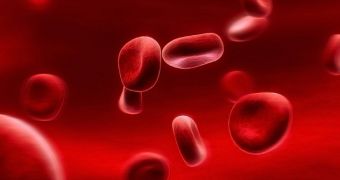Researchers have recently announced that, should things go according to plan, it will not be long until laboratory-grown blood transfusions become a reality. Specifically, they claim that the first test subjects will begin receiving such transfusions by late 2016.
As detailed on the official website for the University of Glasgow, current medicine is no stranger to blood transfusions. On the contrary, it is estimated that over 90 million red blood cell transfusions are currently performed annually on a global scale.
The trouble is that, presently, this practice relies heavily on blood donations. Hence, it often happens that supplies are insufficient, especially in developing countries. What's more, transfusing donated blood goes hand in hand with an increased risk for infections, and compatibility is also an issue.
Hoping to solve this problem, a research program led by scientists with the Scottish National Blood Transfusion Service and backed up by charitable organization the Wellcome Trust aims to figure out how to grow blood in laboratories, and then use it in transfusions.
Information shared with the public says that this initiative is to follow on from previous research showing that red blood cells can be engineered from pluripotent stem cells. According to specialists, stem cells are able to form any other cell in the human body, which is why they have been chosen for this project.
Gizmag informs that the red blood cells that the scientists involved in this investigation wish to focus on are those labeled as type O-. This is because these cells have been documented to be compatible with patients with all other blood types.
“We must first make the stem cells become a mesoderm – one of the body layers that makes things like muscle, bone and blood – and then get it to turn into blood cells. Then we have to make it develop into a red blood cell specifically and finally make it eject its nuclei and mature properly,” Dr. Joanne Mountford with the University of Glasgow detailed the procedure in a recent interview.
Although engineering red blood cells from stem cells might not seem all that complicated, the fact remains that quite a lot of work will have to go into making this process scalable for manufacture on a commercial scale, specialists explain.
“Every single bag of transfused blood has about two trillion red blood cells in it. It’s a ludicrously high number to make in the lab. We use two million of those bags every year in the United Kingdom alone. Ensuring that any industrially produced blood can be made economically viable is quite a task,” Dr. Joanne Mountford wished to stress.

 14 DAY TRIAL //
14 DAY TRIAL //